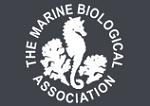APHOTOMARINE
An online educational resource dedicated to the photography of
marine themes, marinelife, life on the seashore and in rockpools
in the coastal waters of south-West England by David Fenwick.

Cyanea capillata
- stranded on beach 1
Lion's mane jellyfish
Cyanea capillata
- stranded on beach 2
Lion's mane jellyfish
Cyanea capillata
- stranded on beach 3
Lion's mane jellyfish
Cyanea capillata
- tentacles 1
Lion's mane jellyfish
Cyanea capillata
- tentacles close-up 1
Lion's mane jellyfish
Cyanea capillata
- gonads 1
Lion's mane jellyfish
Cyanea capillata
- muscle folds with pits 1
Lion's mane jellyfish
Cyanea capillata
- muscle folds with pits 2
Images of species taken on the strandline at Port Erin, Isle of Man, 15.07.14.
This species is infrequently recorded in Devon and Cornwall, more common in northern areas of the UK. The related Blue jellyfish, Cyanea lamarcki, does not have any pits in the muscle folds.
Common name: Lion's mane, but Hairy stinger used by Edward Step; By the Deep Sea. A Popular Introduction to the Wild Life of the British Shores. 1896.
APHOTOMARINE supports open source data recording and sharing for the benefit of wildlife, recorders, research, science and education. The project recommends the following websites and works with the following bodies and organisations.
The Marine Biological Association or MBA, based in Plymouth, is one of the world’s longest-running societies dedicated to promoting research into our oceans and the life they support. Since 1884 the MBA has been providing a unified, clear, independent voice on behalf of the marine biological community.It has a growing membership in over 40 countries.
The National Biodiversity Network or NBN is a charity that supports open source data sharing and recording supporting conservation, science and education. "Why do recorders need open source?". Simply because it supports the core values of wildlife recording and the free use of records and data over a very wide network that includes partners like the Natural History Museum.
The taxonomy used here is based on that of the following database, which is also used by the MBA, NHM and the NBN.
The World Register of Marine Species or WoRMS.

